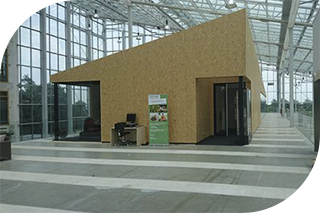Analysis of formaldehyde in resins and wools.
Here, the extraction of the formaldehyde is of the upmost importance, since it is detrimental that this develops during the sample preparation. Together with the customer a method was developed that could product specifically measure formaldehyde properly and reproducibly.
The analysis of monomer remains in polymer matrix.
By using a HPLC-RID (refractive detector), a method was developed for the presence of remnant alcohols in a polymer matrix. When a regular GC or Headspace method would be applied there was a heightened risk of demolition, and, with that, a heightened value. That is why a low temperature HPLC-RID method was developed to quantify these alcohols.
The determination of the amount of remnant antioxidant in a cream.
By means of ion chromatography the sulphite content is used to measure the remainder of the antioxidant content. However, ion chromatography is a watery analysis method, in which the antioxidant must be extracted without reacting to sulphate, among other things. Together with the customer, a product specific method has been developed to measure it quantitatively and to stabilise the antioxidant in a solution for the analysis.


